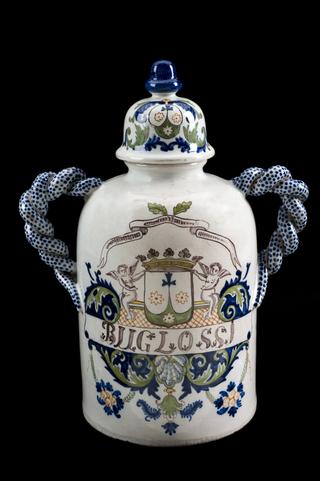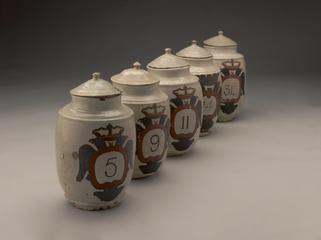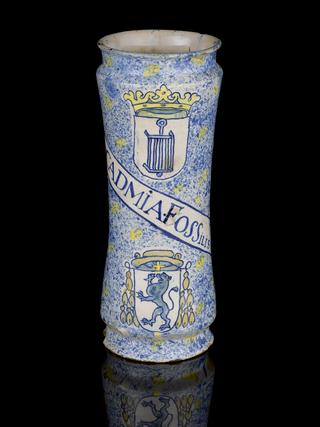




Queensware earthenware snuff storage jar, inscribed "RAPPE" with scene of North American native or West Indian, on of a matching pair (see A220454)G.P maker, made in England, 1750-1800
Snuff jars were used as storage containers for snuff, which is powdered tobacco. This earthenware jar has the word “RAPPE” painted on it, which is the French name for snuff. The design also shows a Native American or a native of the West Indies smoking a pipe. On the other side there is a picture of a ship sailing towards the man, possibly looking for tobacco to trade.
The practice of ‘taking snuff’ through the nose became common in Europe in the 1600s and was hugely popular throughout the 1700s. Snuff was well liked for its aroma, taste and nicotine boost. It was also believed to ward off colds and to be good for the relief of ear, nose and throat problems – as well as snoring.
Details
- Category:
- Medical Ceramic-ware
- Collection:
- Sir Henry Wellcome's Museum Collection
- Object Number:
- A220455
- Materials:
- earthenware
- Measurements:
-
overall: 260 mm 207 mm, 1.75kg
- type:
- snuff jar
- credit:
- Wellcome Trust (Purchased from Stevens)




